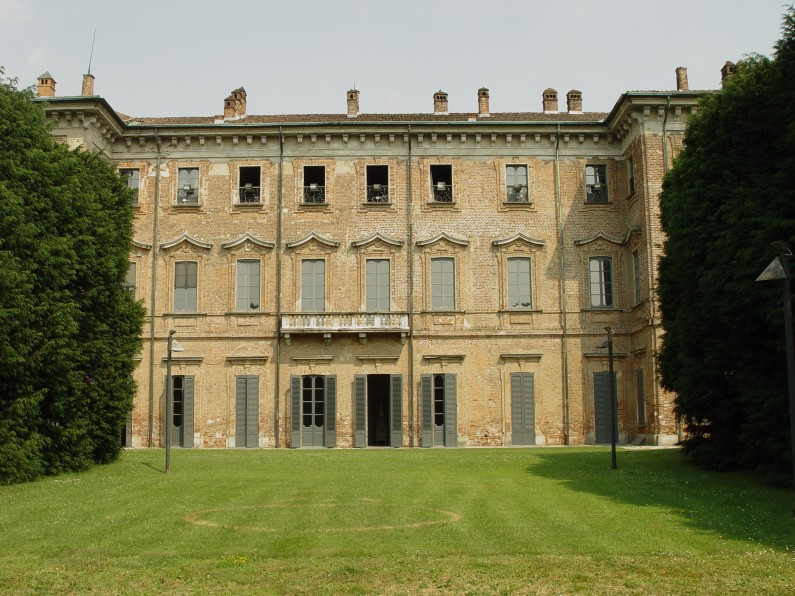
The “Theatre of the greens” was the area of the park dedicated to rural games such as the “bocce” and countryside feasts which the maquis, Pompeo IV Litta, organised on the occasion of his wife Camilla Lomellini Tabarca’s name-day, the only time of the year in which the population of the village of Lainate was allowed to enter the Villa.
More
This portion of the park faces the west façade of the 18th century mansion and seems to be enclosed by a broad walkway of yews which in the 19th century were profiled in the shape of cut pyramids.
The terminal part shaped like an exedra, up to the ‘30s hosted the gigantic statue of Adonis, produced around 1602 by the sculptor from Como, Marco Antonio Prestinari (deceased in 1621) and today kept at the Louvre Museum in Paris. The work, an exuberant male nude, was achieved by the artists who drew inspiration from the stance of the “Venus Urania” sculpted around 1575 by Giambologna (today at the Kunsthistorisches Museum in Vienna), and is one of the first works documented by Prestinari, before his talent was discovered by Cardinal Federico Borromeo, for whom the sculptor did a great number of portraits of “Sibyls and Prophets.” The sculpture was placed in the “Nature Theatre” only after 1720. In fact, records had previously described its position in an elevated position, right next to the “Water Tower” and therefore, on the opposite side of the complex. This location was due to the myth of Adonis, who was attacked to death by a wild boar and restored to life through the tears of the goddess Aphrodite who was in love with him, and who was thus assimilated to the waters of the Nymphaeum in Lainate. This would be confirmed also by the Latin inscription found at the base of the sculpture. “Adonis pene redivivus / Pirrhi vicecomitis borromaei largitate,” according to which it was precisely the patronage of Pirro I Visconti Borromeo (and therefore the “tears of his fountains”) that had brought to life the unfortunate hero. Undoubtedly, for Pirro, afflicted by gout and nearing death (in 1604), the waters of the Nymphaeum must have really had a “curative” value and the fame obtained with the building of the complex, should have ensured for him eternal life in the memoirs of Lainate.

